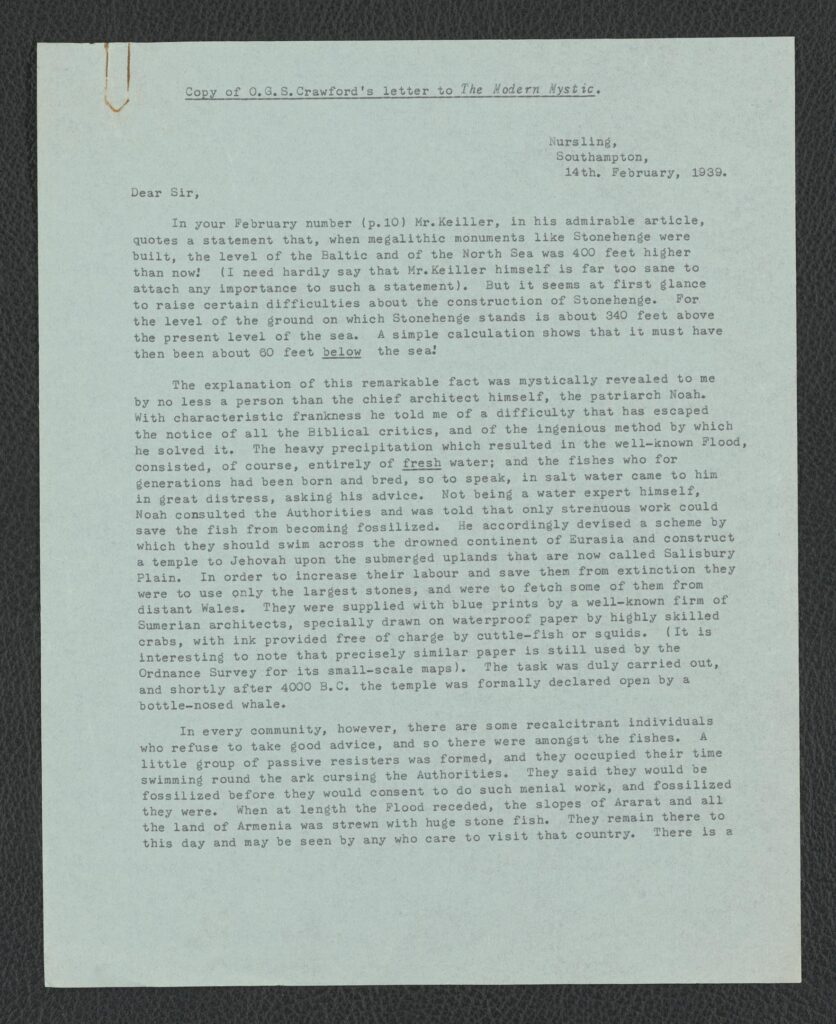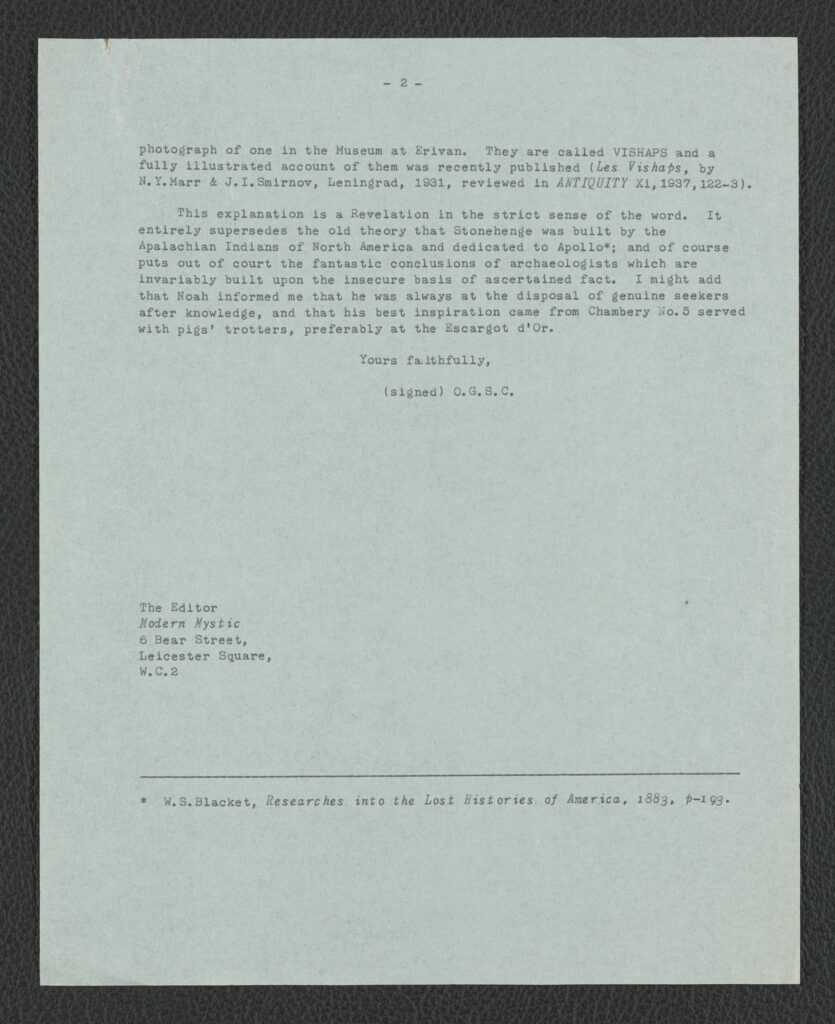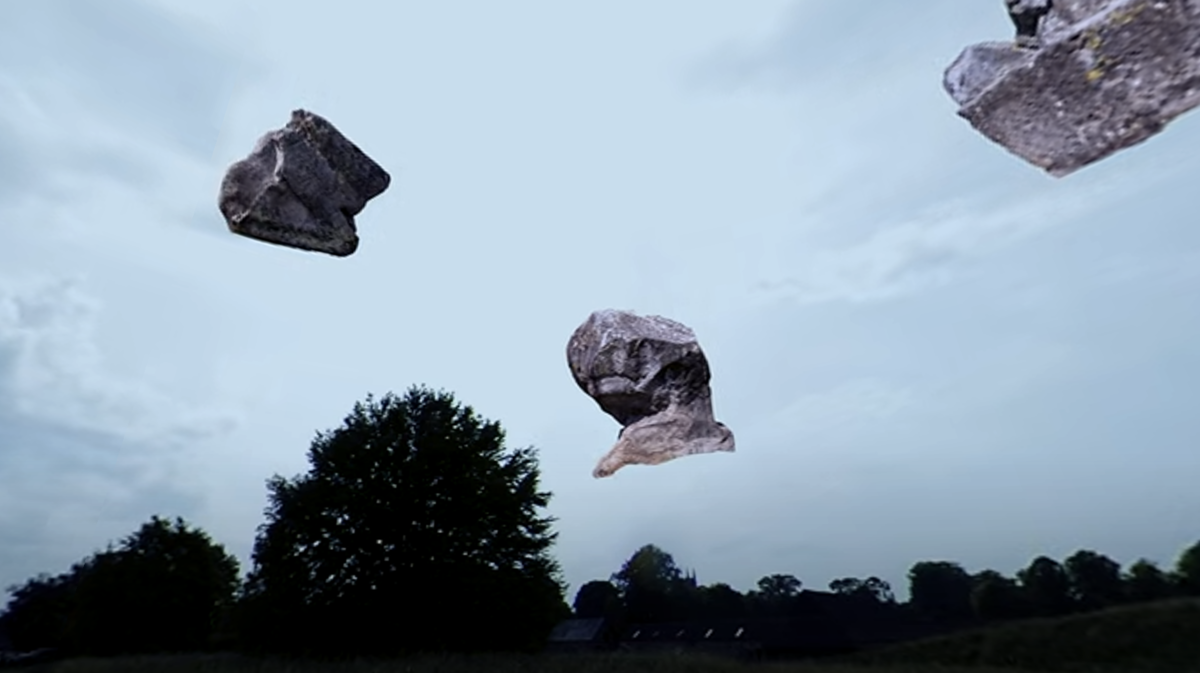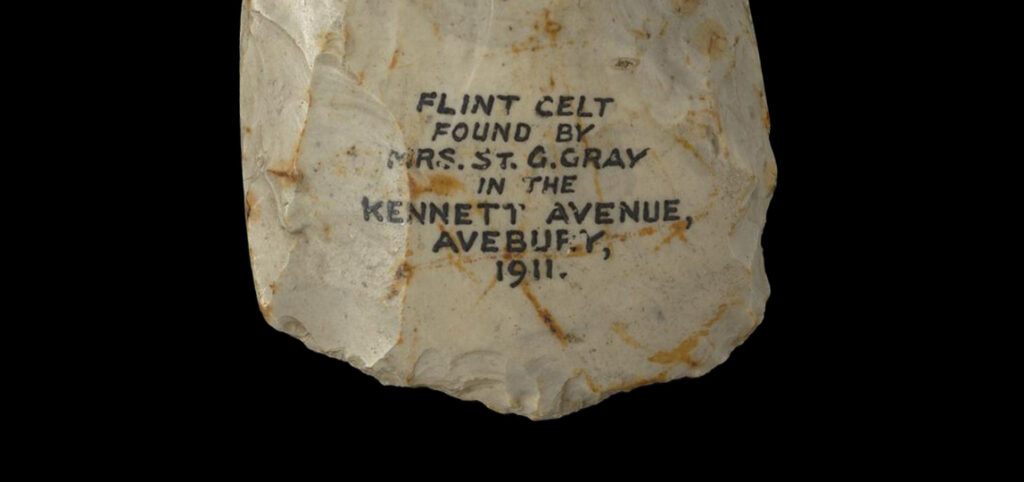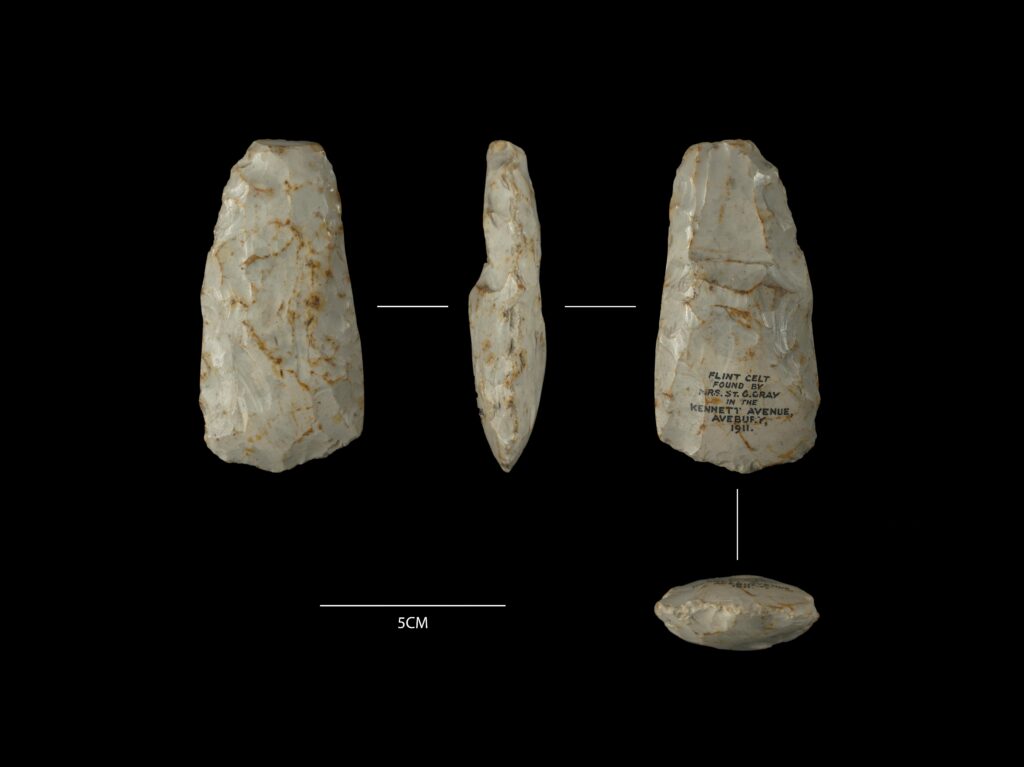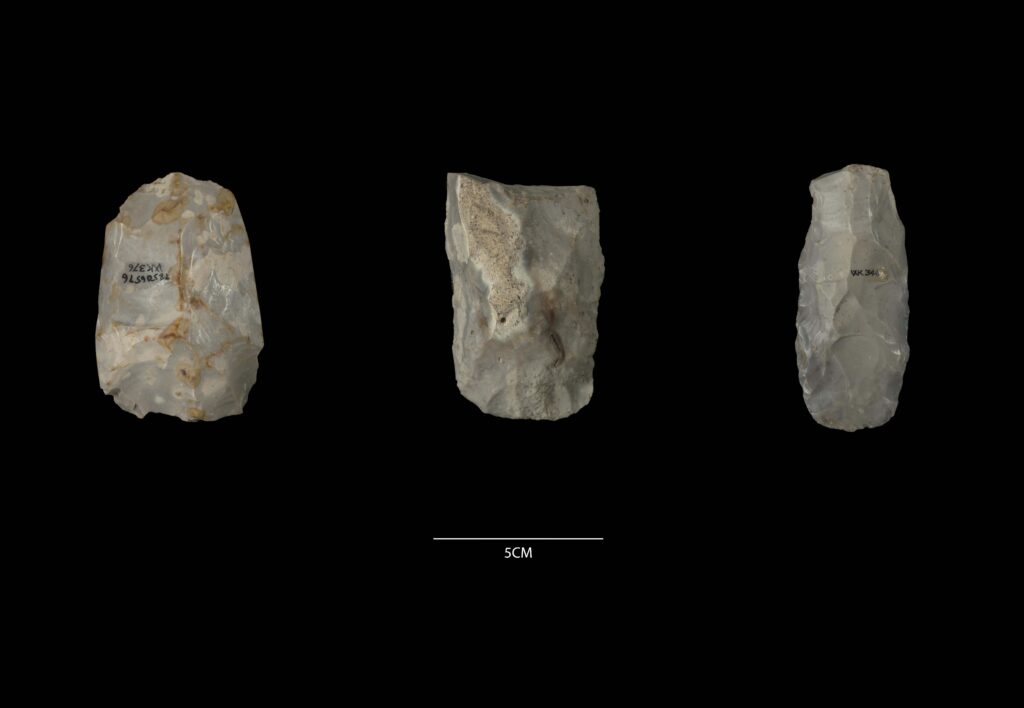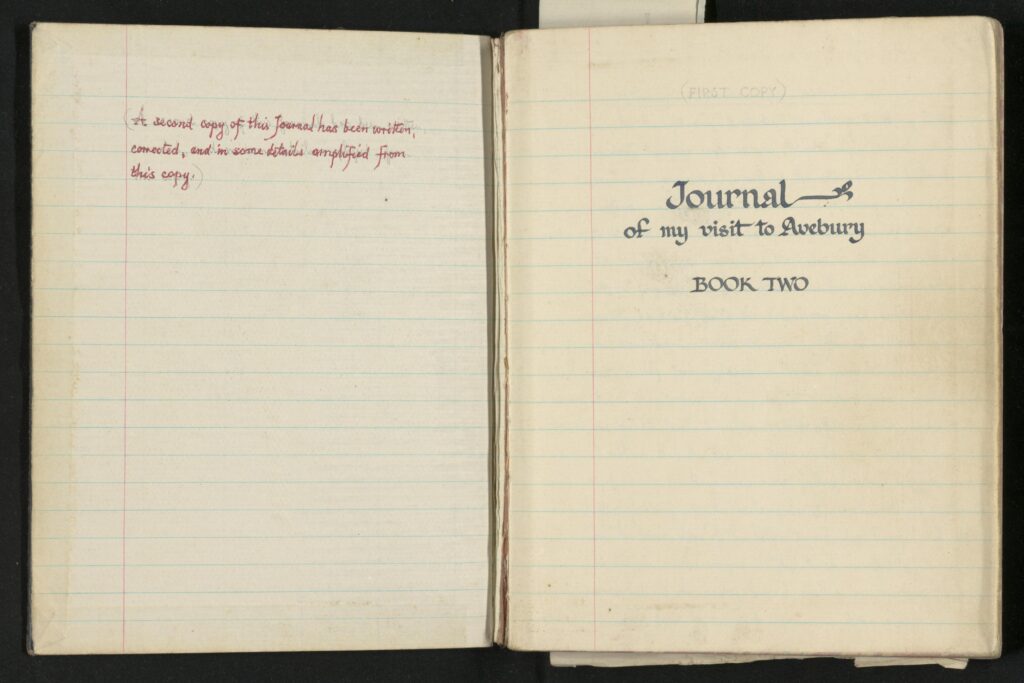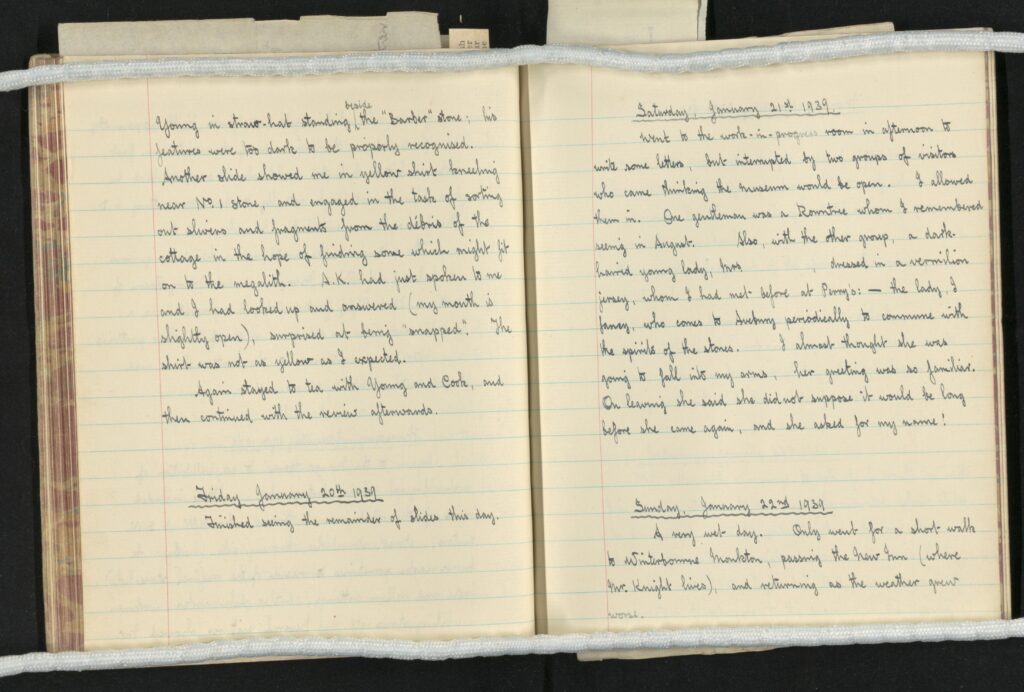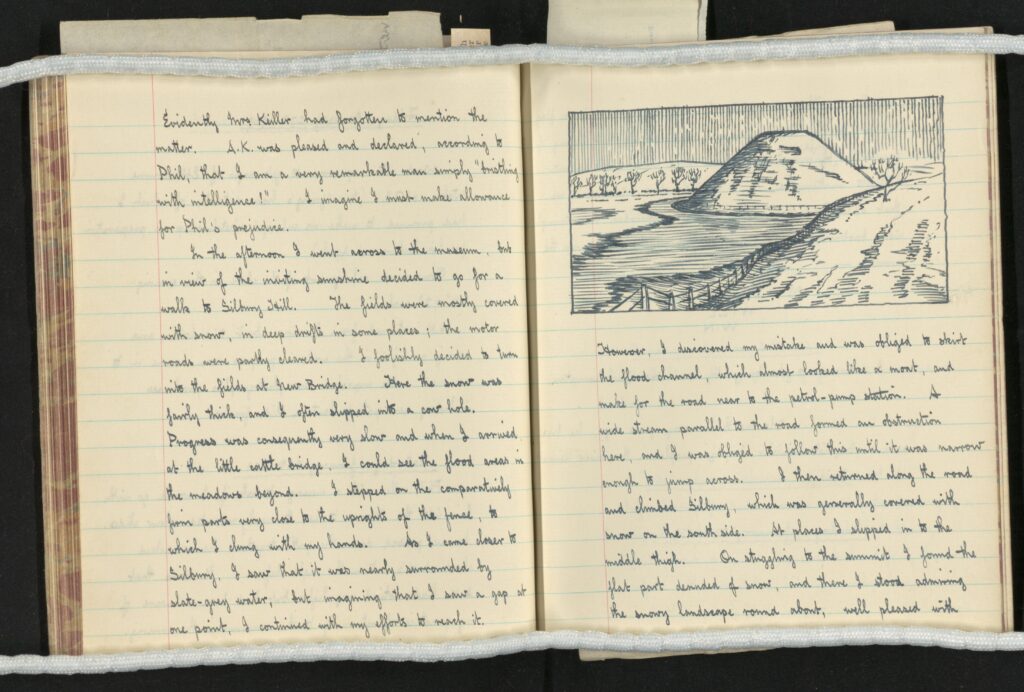[Editor’s note: Matt completed a student placement with the Avebury Papers as part of his masters’ programme at University of York. The team are so happy to publish one of the key outcomes of his placement here. You can more about his experience in his first blog post. Huge thanks to our volunteers who participated in the Focus Group and whose feedback will directly impact future development of Pathways]
Introduction: A Pathway into the Avebury Papers
The Avebury Papers archive houses thousands of digital items that cover the range of occupation of Avebury, as well as the history of the Avebury excavation. One of my roles as a placement student was to create a Pathway which would serve as an engaging and entertaining entry into the archive for those not familiar with Avebury and its past. In the creation of this pathway I hoped to create a concise, interesting, and accessible entryway into the Avebury Papers for those that are interested in the history of the Avebury excavation.

The photographs that I chose directly correlate to diary entries from Denis Grant King, who was an archaeological draughtsman working at the 1930s excavations, and the Pathway aims to tell a human story of adventure. By making these stylistic choices, both textually and through artefacts, ultimately showing one man’s trip to Avebury – from the moment he leaves home to the moment he leaves – not only gives insight into the work and life at Avebury in the 1930s, but also parallels the adventure a tourist may experience today.
The pathway was created as a ‘Prezi’ experience because Prezi offers an engaging user-experience with a variety of design choices for the author to choose from. Moreover it allows for a free-scrolling form of exploration if the user prefers to explore at their own pace, or follow the more structured slide-show.
I invited volunteers from the National Trust Avebury team to attend a focus group to give feedback on the Pathway. I ran the focus group when the Prezi was in a ‘beta’ form, ready to use but with the expectation of changes. The focus group was intended to discuss how effectively the Pathway facilitates a user’s further exploration into the Avebury Papers archive. By organising a focus group of self-selecting Avebury Papers volunteers, we were able to benefit from the knowledge of individuals who have intimate knowledge of the archives, and who are also experienced in speaking with visitors to the site.
Focus Group: Guiding Questions
Using the knowledge of Avebury Papers volunteers, I hoped to elucidate how effectively the pathway functioned. Using guiding questions, the focus group aims were to discern whether the pathway should be narrowed down and focus on particular themes in the archive; broadened to include more themes; whether more pathways should be created separate from one another; whether the pathway should function as a storytelling tool or be strictly informative; and ultimately if the pathway was deemed engaging and entertaining.
These aims were important to explore as they encompass the overall ideas of how one might explore the archive, and be motivated to explore it further. In order to explore these aims throughout the focus group, a series of guiding questions were created. These questions were:
1. What did you find most compelling or interesting about the pathway?
2. In what way Does the pathway inspire you to learn more?
a. What is working well, and what could be improved upon in this regard?
b. Did you find that the pathway kept you engaged, or were you bored by it?
3. How is the pathway representative of the archive as a whole?
a. Do you think that it is important that the pathway represents the archive as a whole, or should it be representative of only one group of artefacts?
b. Would you like to see more groupings of artefacts in this pathway, or fewer?
c. Should the pathway be longer?
4. Should the pathways act as a creative storytelling tool, or be more strictly informative? Why would one option be more effective than the other, in your opinion?
Each question was posed to explore a certain aspect of the pathway. Question one acted as an easy and thought-provoking exploration of what a volunteer felt when exploring the archive, and gave the focus group leaders a chance to see what worked for the pathway from the beginning. Question two, as well as sub point a and b, explored the idea of ‘inspiration’, and was the most lucrative of the questions that resulted in the most conversation, which will be discussed later in this report. Moreover, it helped elucidate on whether the archive was engaging, keeping the attention of the user. Question three helped shed light on the scope of the pathway and what may work best moving forward regarding how much should be in a single pathway and their functionality; this question was heavily touched upon in question 2 during open discussion with the group. Finally, question four opened the floor to the function and tone of the pathway and how that might alter how a user experiences it.
Discussion
These questions allowed for a free-flowing discussion on the nature of the pathway and their utility in the larger context of the archive.The volunteers listed are as follows: Dai Davies, volunteer 1; Andrew Snowden, volunteer 2; RP, volunteer 3; Bruce Chinery, volunteer 4; Martin, volunteer 5; Volunteer 6.
Here, I summarise the responses to each question:
- Question one: This question helped elucidate what works with the Pathway. There was a consensus amongst the volunteers that the pathway was intriguing and enjoyable, and offered insight into what was held in the archive. All volunteers noted that they enjoyed the adventure-like theme of Denis Grant King and the human touch it gave to the pathway. Dai and Andrew noted that they felt they did not get a good sense of what the archive held as a whole, however. They also noted they’d have liked a way to access other topics at a click of a button – for example, hyperlinks that lead to other objects from the collection.
- Question two: Andrew noted that they enjoyed the post-it style of writing, but did touch on accessibility in terms of whether the user would be using a phone, PC, tablet, etc and how that may alter how they experience the pathway. Volunteer 6 felt that it was a ‘page turner’, also commenting that they would have liked to be able to branch off into new topics similar to a ‘Wikipedia rabbit hole’. This sentiment was shared by Dai. Andrew made note that the audience should be kept in mind when creating a pathway, and Bruce and RP elaborated further that they do not think the pathway would be valuable to a researcher. In the case of this pathway, the volunteers did not specify what the ideal audience of this Pathway was.
- Question 3: There were consistent comments throughout the focus group pertaining to the portion of question 3 discussing whether the pathway should be representative of the archive. A sentiment shared by all volunteers was that the Pathway does not paint the whole picture of the Avebury archive. For example, Andrew noted that Denis Grant King’s arrival to Avebury does not occur until later into the excavation, removing the beginning phases of the excavation. Martin echoed this, agreeing that artefacts that predate Denis Grant King would help add to the Pathway. Dai commented that too many pathways would raise an issue of scope, and questioned how many pathways would be feasible to address the entirety of the archive. Volunteer 6 thought that the pathway was an ideal size, a notion that Dai agreed with, and that a high-level summary at the beginning of the Pathway would have served them well to get a quick idea of what the Pathway would entail.
- Question 4: Dai, Martin, and Volunteer 6 agreed that the Pathway should be a storytelling tool for the casual visitor. RP said that the Pathway should be factual and straightforward, but still engaging. Andrew noted that while some want storytelling, others want straightforward writing; all participants also noted earlier that the audience should be kept in mind (e.g. academics vs. tourists), raising the notion that there should be different ‘pathways’ for both casual visitors and academic researchers. Volunteer 6 also suggested that she would have liked to see an image of Denis Grant King, the subject of the Pathway, which volunteers agreed with.
Key Findings and Recommendations
Overall, the Pathway met most of its aims based on the focus group results. Volunteers generally agreed that the Pathway was engaging and informative, and left them wanting to explore further. The Pathway necessarily paints only a small picture of life at Avebury. With time constraints kept in mind regarding the allotted placement hours, the only changes that will be made to this particular placement will be adding the accession numbers to each photograph (a recommendation from the Project Team), as well as adding in a picture of Denis Grant King to more fully introduce him in the pathway.
Further Pathway recommendations
Volunteers shared ideas that were beyond the scope of this Pathway. This is perhaps indicative of the fact that they are very familiar with the archive as a whole. Their responses clearly indicate that further Pathways are desirable. The following are key recommendations for other Pathways that might be developed in the future:
- Events such as the onset of World War 2 and its effects on the excavation
- The start of investigations of Avebury (before the arrival of Denis Grant King).
By having multiple pathways based around different stories to be told and themes to be explored, visitors would have access to multiple accessible and easily digestible avenues of information, facilitating more active exploration. Moreover, while keeping scope, accessibility, and website management in mind, including hyperlinks to other related information or pathways would allow for a more seamless exploratory experience.
Explore the Pathway
You may explore the beta version of the Pathway via this link to Prezi: https://prezi.com/p/vavra2zu-8dw/?present=1

